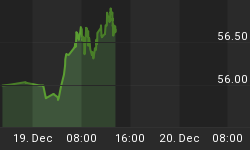Bullish news is mounting for gold as the world's central banks spark a surge in demand for the precious metal.
The People’s Bank of China boosted its gold reserves for a 3rd straight month in February, bringing overall holdings to 1,874 tonnes, or 60.26 million ounces. The move is part of China’s technique to move away from the U.S. dollar.
According to the central bank, it has added about 32 tons of the precious metal to its coffers in the last three months, purchasing some 10 tons in February.
The Reserve Bank of India, too, is boosting its gold stash, adding 6.5 tonnes of gold to its reserves in January (2019 ), taking its overall reserves of the metal to 607 tonnes.
According to the latest data released by World Gold Council, Reserve Bank of India (RBI) will soon become the tenth biggest holder of the metal on the planet overtaking the Netherlands, reports Service Basic (BS).
Bullish news from the gold mining industry
While demand is slowing increasing, the mining market is also getting some beneficial news, though obstacles do remain.
“The state of the mining industry is quite strong. Over the past few years we’ve seen financial discipline, return of dividends, shareholder buybacks, and a lot more scrutiny around sustaining CapEx. Today, we are back to good times. We returned to high-margins in the industry,” Mike Sinden, research director at Wood Mackenzie informed Kitco News.
Looking ahead, though, the next big issue is the absence of financial investment in the mining market due to years of cost-cutting steps, Siden explained. Related: Tesla's Latest Breakthrough Can Reduce Charge Time By 50%
Sinden went on to say that, “Because of this financial discipline, we’ve seen a lack of investment. We don’t see enough supply on the horizon, we see increasing market deficits and we are thinking that we are probably going to enter a period where we will need to see a lot more supply come online,”
Deficits are naturally great for prices, he added, explaining that costs are most likely to shoot up if the deficits are not dealt with in time: “Our price forecasts across the board are pretty constructive and are backed up by these deficits. Our zinc price will hit $3,700 a ton by the end of the year. Copper as well, we expect prices to get above $3.30 a pound this year. For nickel, fundamentals point to prices going up as well.”
The actual quantity of investment required to sustain the existing levels of output in commodities mining equals to about $200 billion, with copper requiring $115 billion, gold requiring $41 billion, and nickel short of $23 billion.
“Overall, the industry will need about $200 billion of CapEx that is currently not-committed over the next decade to meet deficits,” Sinden explained.
Global debt is on the rise
Another major influence in the rising demand for gold is recent reports stating that a global debt storm is brewing.
S&P Global Ratings analyst Alexandra Dimitrijevic explained, “A perfect storm of realised risks across geographies and asset classes could trigger a systemically damaging downturn,” adding, “this downside situation reflects an increased reliance on global capital flows and working secondary market liquidity.”
By Michael Kern for Safehaven.com
















